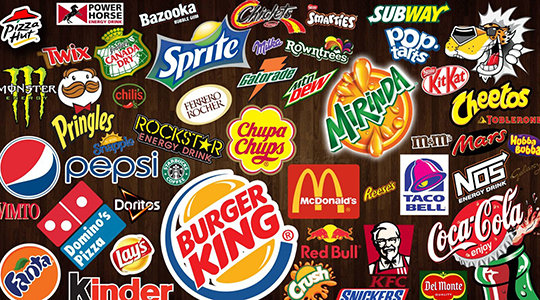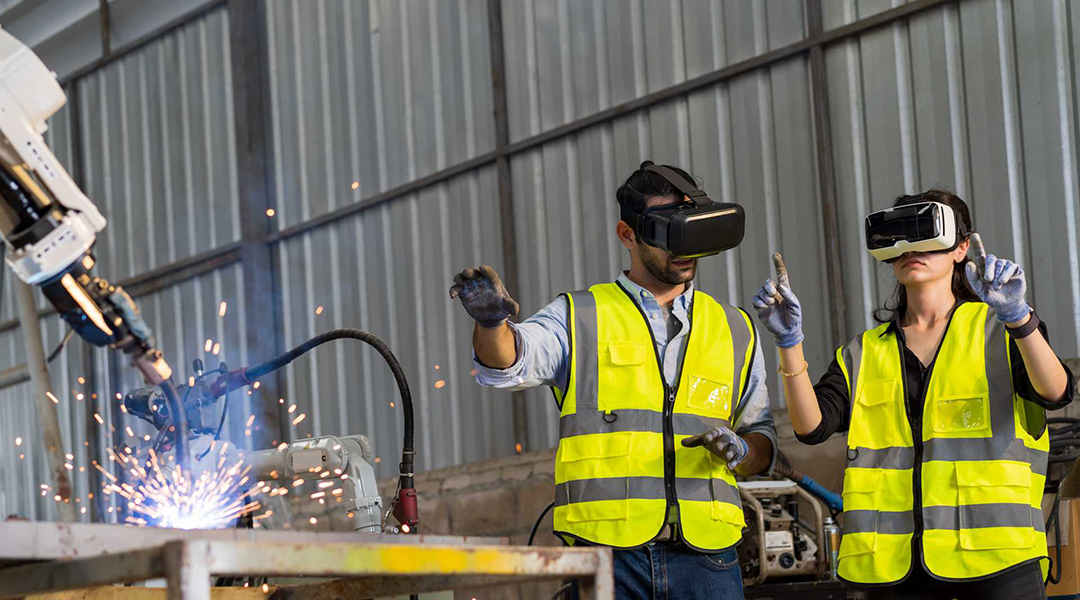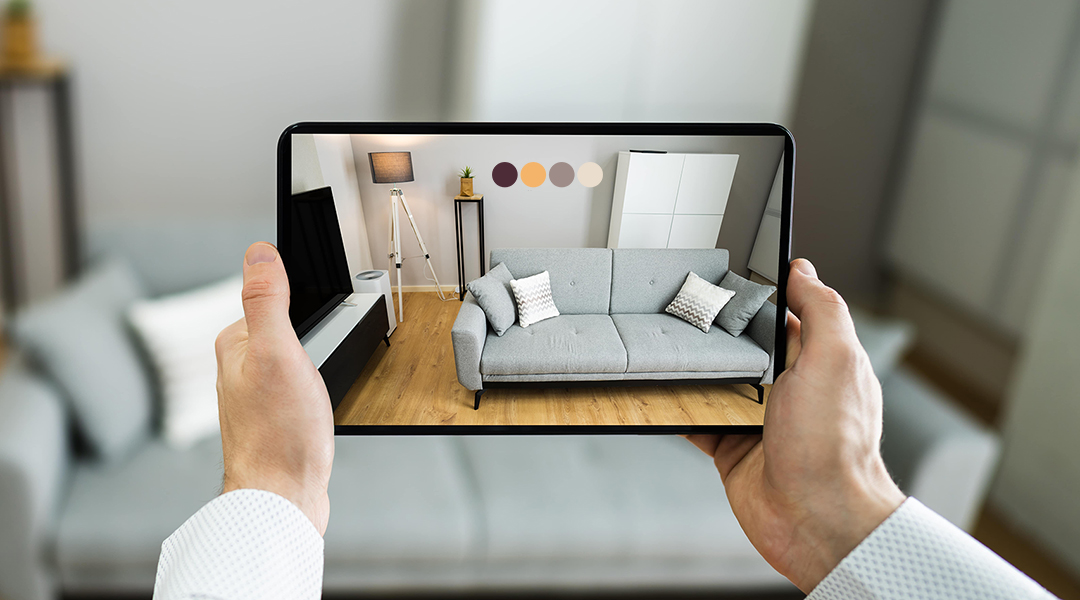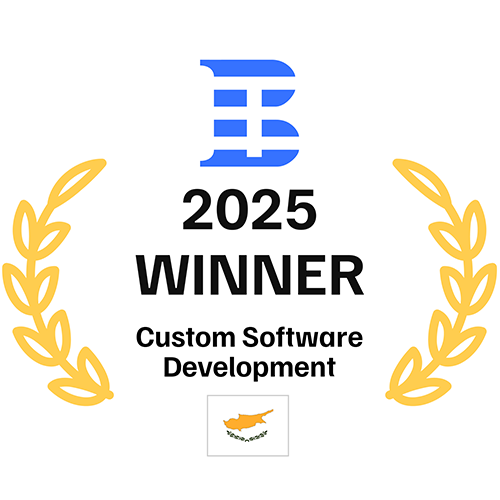It is hard to think about a more competitive industry than marketing. The bar for creativity is being raised daily; the campaigns that were the epitome of out-of-the-box thinking two years ago now seem stale and outdated. Marketers are in a constant rat race to develop better ways to capture, convert, and retain prospects, and it doesn’t get easier as society’s expectations for quality promotions only grow.
Luckily, the technical progress becomes a helping hand for marketers. Introducing cutting-edge technologies gives marketers new mediums to reach customers and tools to catch their attention. As an augmented reality app development company, we want to emphasize AR technology in this context. Augmented reality marketing campaigns give a new platform for companies to communicate and an opportunity to strengthen their brand voice. Is that something you are interested in? Then, explore the intricacies and promises of AR marketing in our article.
What Is Augmented Reality In Marketing?
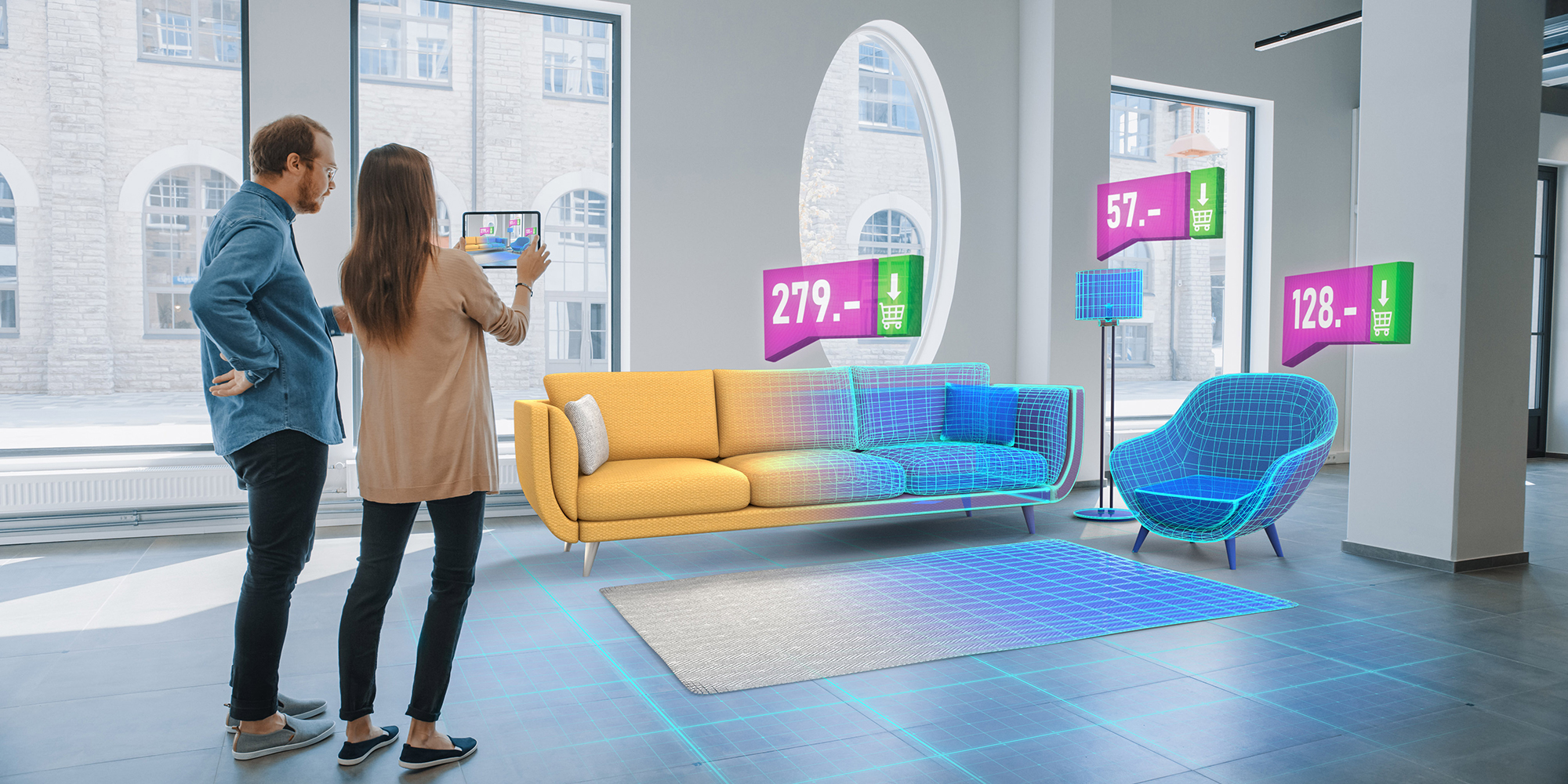
Imagine walking past a store and seeing a pair of shoes that catch your eye. Now, picture pointing your smartphone at the shoes and instantly viewing how they would look on your feet, exploring different colors, and even checking their availability in your size. This seamless blend of the physical and digital worlds is quite a real scenario today and a vivid example of AR in marketing.
If focusing on definitions, augmented reality marketing meaning is about the integration of digital information with live video or the user's environment in real-time. Essentially, AR takes the world around you and enhances it with digital overlays, which can be interacted with in various ways. This technology has opened up new dimensions for marketers to tell their brand's story, showcase products, and engage with customers on an unprecedented level.
Unlike virtual reality, which creates a wholly artificial environment, AR uses the existing surroundings and simply overlays virtual information on top of it. As a result, it is more accessible and less intrusive, allowing consumers to interact with it on their own terms.
From interactive billboards to virtual try-ons, AR in marketing's main goal is crafting an experience that enriches the consumer's journey and fosters a deeper connection with the brand. AR turns passive observers into active participants, as it powers up a memorable interaction far more likely to lead to a conversion.
Everyone is glued to their smartphones now, so there are no concerns regarding technology accessibility or expediency. As proof of that, more and more brands leverage AR for marketing day after day. All shows that soon augmented reality will become another must-have marketing medium, just like social media or landing pages. In our opinion, those that will adopt this trend at its dawn increase their chances of gaining a competitive advantage and capturing the biggest audience share. So, if you are reading this article, you might already be a step forward from your competitors!
Benefits Of Augmented Reality In Marketing
Did you know that products that have AR experience receive a 94% higher conversion rate than the ones that don't? And that’s only one of the benefits of augmented reality for marketing. Here is the list of others.
Elevated Customer Engagement
A sports brand integrates AR into its mobile app, allowing customers to try on outfits by simply scanning their bodies with their phone's camera. This try-before-you-buy experience keeps customers engaged and has boosts sales significantly.
Unforgettable Brand Interactions
A well-known beverage company uses AR to create interactive campaigns where customers can scan their drink cans to unlock exclusive music content. This novel experience not only entertains but also solidifies brand recall.
Personalized Shopping Experiences
An eyewear company offers an AR feature where users can try on glasses using their mobile device, leading to a more confident purchase decision and a personalized touch that online shopping often lacks.
Streamlining the Buyer's Journey
In the automotive industry, AR allows customers to configure their future car in 3D, exploring different colors and features in a way that's both engaging and informative, potentially reducing the time to purchase.
Accessible and Informative Content
A pharmaceutical company develops an AR app that, when a drug's packaging is scanned, displays usage instructions, dosage information, and interactive 3D models of the medicine working inside the body, enhancing understanding and compliance.
Viral Marketing Potential
A theme park launches an AR treasure hunt that encourages visitors to explore different areas and share their experiences on social media, naturally increasing the park's visibility and attracting new visitors.
Valuable Consumer Insights
A beauty brand's AR platform analyzes the types of makeup looks users try on most frequently, providing the company with data to tailor their inventory and marketing strategies to actual consumer preferences.
Reduced Marketing Costs
A furniture manufacturer uses AR to showcase how different furniture pieces would look in various settings. This simple solution can save significant costs usually required for setting up multiple physical showrooms or staging areas.
These examples illustrate that AR brings more than a wow effect but a real business value you might look for to accelerate and optimize your marketing campaigns.
The Main AR Use Cases for Marketing Purposes
Just as social media revolutionized marketing and advertising by providing a platform for direct consumer engagement, AR is now paving the way for a more interactive and personalized brand experience far beyond the capabilities of traditional digital ads. So, how does AR marketing achieve that?
Virtual Try-Ons
Concept: This technology allows users to visualize products on themselves or in their space using AR filters and 3D models, typically through a smartphone or AR glasses.
Benefit: It enhances the shopping experience by providing a try-before-you-buy option, enhancing satisfaction and reducing returns.
Industries Benefited: Fashion and Apparel, Beauty and Cosmetics, Furniture and Home Decor, Eyewear, Jewelry.
Interactive Advertising
Concept: Advertisements that come to life when viewed through an AR-enabled device, offering interactive features such as clickable hotspots or animations.
Benefit: It captures attention more effectively than static ads, fostering greater engagement and a memorable brand experience.
Industries Benefited: Automotive, Real Estate, Travel and Tourism, Consumer Electronics, Entertainment.
Product Demonstrations
Concept: AR product demos allow customers to see how products work in real-time, often in their actual use environment, without the need for a physical product present.
Benefit: It provides an immersive understanding of the product, highlighting features and usability, which can drive informed purchasing decisions.
Industries Benefited: Technology and Gadgets, Home Appliances, Educational Tools, Sports Equipment, B2B Machinery.
Augmented Packaging
Concept: Packaging that, when scanned by an AR app, displays additional content such as interactive experiences, product backstory, or assembly instructions.
Benefit: It turns packaging into a value-added touchpoint, enhancing the unboxing experience and deepening customer engagement.
Industries Benefited: Food and Beverage, Pharmaceuticals, Personal Care, Children’s Products, Luxury Goods.
Enhanced Print and Billboard Advertising
Concept: Traditional print and billboard ads are overlaid with digital content that can be accessed via AR, merging physical and digital advertising spaces.
Benefit: It revitalizes print media with digital interactivity, offering a novel way to connect with tech-savvy consumers.
Industries Benefited: Media and Publishing, Public Service and Non-Profit, Retail, Event Promotions, Cultural Institutions.
Event Engagement
Concept: AR usage at events to provide interactive elements such as virtual information booths, augmented venue maps, or digital scavenger hunts.
Benefit: It enhances attendee participation and provides unique, personalized event experiences.
Industries Benefited: Conferences and Trade Shows, Music and Arts Festivals, Corporate Events, Educational Workshops, Sports Events.
Brand Storytelling
Concept: Crafting a narrative around a brand that consumers can explore in an immersive AR environment, often weaving in interactive elements that tell the brand's story.
Benefit: It creates a compelling brand universe that engages consumers emotionally, fostering loyalty and brand advocacy.
Industries Benefited: Marketing and Advertising Agencies, Entertainment and Film, Tourism, Fashion, Non-Profit Organizations.
Gamified Marketing
Concept: Incorporating game elements into marketing campaigns using AR, such as challenges, point scoring, and leaderboards, to encourage consumer interaction.
Benefit: It drives customer engagement and retention by making brand interactions fun and rewarding.
Industries Benefited: Retail, Fast Food and Restaurants, Beverage Companies, Fitness and Health, Education and Learning Platforms.
Case Studies: Augmented Reality Marketing Examples
The most compelling way to understand the impact of AR in marketing is to look at real-world applications that have not only garnered media attention but have also delivered tangible results. We gathered the most prominent examples for you.
IKEA Place – Revolutionizing Furniture Shopping
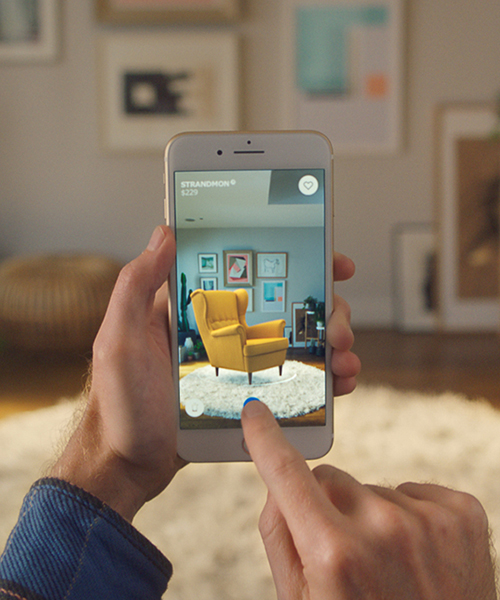
IKEA introduced the IKEA Place app, which allows users to visualize how furniture would look and fit in their space before making a purchase. The app soared in popularity, with IKEA reporting a significant growth in customer engagement and a positive impact on online sales, as customers could try out products in the context of their own homes, leading to more confident purchasing decisions.
L'Oréal's Virtual Makeup Try-On
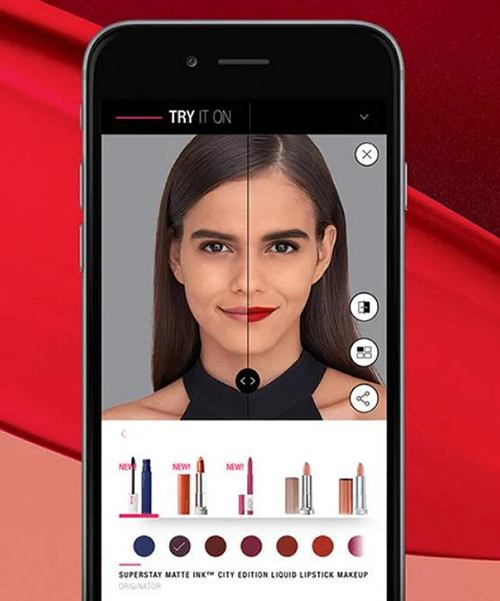
L'Oréal incorporated AR technology into their website and partnered with Facebook to allow users to try on makeup virtually using their device's camera. This integration led to a higher conversion rate and increased time spent on the L'Oréal website and app. The campaign also generated substantial buzz on social media, with users sharing their virtual makeovers, thus amplifying the campaign's reach.
The Night Sky – National Geographic & Aryzon

National Geographic partnered with Aryzon to create an AR experience that brought the cosmos to life. Using a simple AR headset made from cardboard, users could turn their smartphones into a window to the stars. The campaign provided an immersive educational experience, increasing user engagement with the National Geographic brand and driving sales for the Aryzon AR headsets.
Coca-Cola's Immersive AR Stories
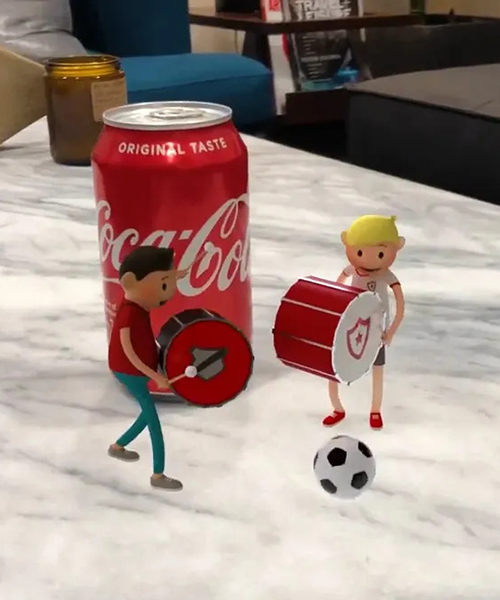
Coca-Cola introduced an immersive augmented reality (AR) experience that allowed users to bring their Coke cans to life through their smartphones. Collaborating with Ogilvy Mexico and VFX house Timber, Coca-Cola created a series of 12 interactive AR stories. Users could point their phone's camera at a can of Coke, and animated characters would engage in lighthearted scenarios.
FurnitARe – Program-Ace’s Take on AR Marketing

Program-Ace took the interactive room design experience to a new level with FurnitARe, a markerless AR solution for interior design. FurnitARe allowed companies to upload an unlimited number of custom 3D furniture models to visualize potential interior designs within their current space. This app addresses common industry challenges such as high development costs and technical performance.
How to Start Your AR Marketing Journey?
Embarking on an AR marketing journey can seem daunting, but with a strategic approach, it can be broken down into manageable steps. Here’s a step-by-step guide to help you leverage AR for your marketing efforts.
1. Define Your Objectives
Begin by identifying what you want to achieve with AR. Are you looking to increase brand awareness, enhance user engagement, or drive sales? Setting clear goals will guide your strategy and help measure success.
2. Understand Your Audience
Know the demographics, preferences, and behaviors of your target audience. What AR experiences are they likely to find engaging? This knowledge will inform the design and complexity of your AR content.
3. Choose the Right Platform
Decide whether your AR experience will be accessed via a mobile app, web AR, or social media platforms. This decision should align with the platforms where your audience is most active and the type of interaction you want to foster.
4. Partner with Experienced AR Developers
Collaborate with a team with a proven track record in AR development like Program-Ace. Their expertise will be invaluable in creating an experience that’s both technically sound and creatively compelling.
5. Create Engaging Content
Choose the appropriate type of AR and develop content that tells a story, showcases your product, or offers a unique experience. The content should be interactive and add value to the user’s interaction with your brand.
6. Test and Iterate
Before launching, test your AR experience with a focus group representing your target audience. Gather feedback and be prepared to make adjustments. This iterative process is crucial for creating an AR experience that resonates with users.
7. Launch Your Campaign
Once you’re confident in the AR experience, roll out your campaign. Ensure you have a marketing plan in place to promote the AR experience so that it will gather decent coverage and reach your audience.
8. Measure and Analyze
Use analytics to track engagement and measure the success of your AR experience against the objectives you set. Look at user behavior, engagement levels, and conversion rates, and use this info when you develop further AR campaigns.
9. Gather User Feedback
Post-launch, collect user feedback to understand what worked well and what didn’t. This will provide insights for future AR initiatives, allowing you to work on your mistakes and back up your initial assumptions with proven data.
10. Scale and Evolve
Based on the analytics and user feedback, take the next step in developing your augmented reality marketing strategy. Consider how to scale your AR marketing activities to reach a wider audience or deepen engagement.
Leverage AR Capabilities with Program-Ace
Summing up, we want to say that AR can become a new best friend to marketers. Enhancing regular experiences, augmented reality pushes the creative borders, allowing creative workers to bring the wildest ideas to life.
You have an idea – we know how to implement it. Program-Ace, a software development company, can give you instruments and provide technical backup so that you can focus on the AR content concept instead of the tech intricacies. Let us make your AR marketing journey smooth and exciting! Feel free to contact us to learn the details of our offers.
